You can trust Cyclingnews
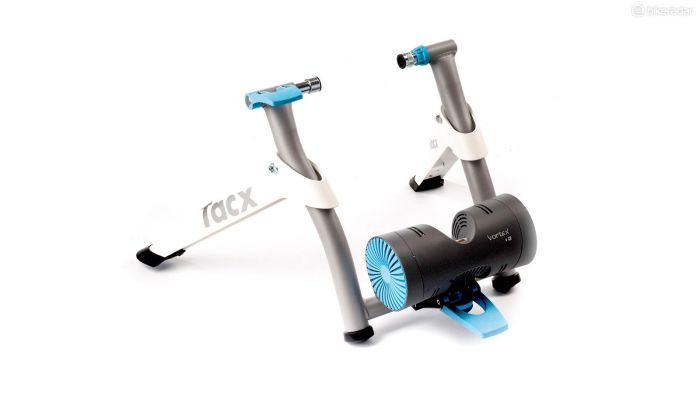
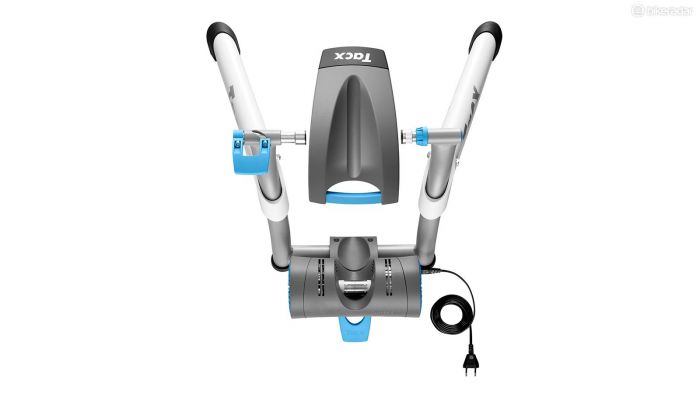
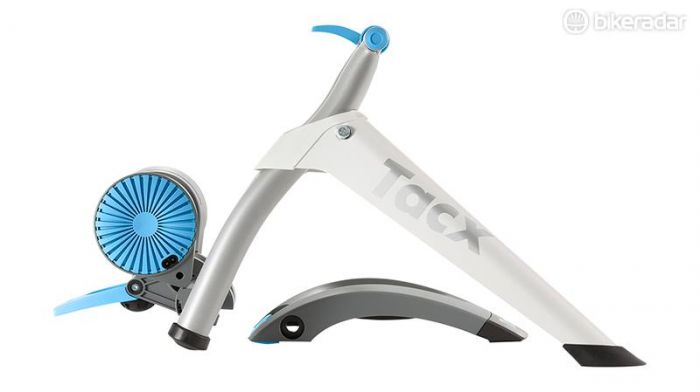
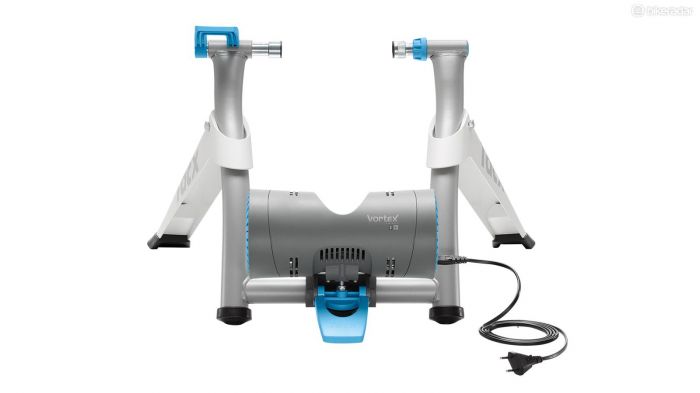
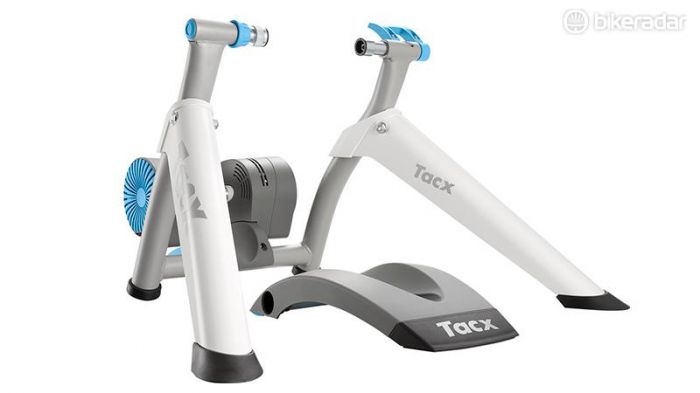
This article originally appeared on BikeRadar
The Vortex Smart adds power assisted resistance and software controlled feedback to Tacx's excellent user-friendly hardware and software at a killer price.
The chassis of the Vortex Smart follows Tacx's well proven template of wide-splayed, foldout front legs that lock into place with the weight of the bike and rider. It's a pretty much foolproof setup and the narrower rear stance makes it relatively tolerant of uneven floors. You can get pretty agitated with your sprinting or out of saddle wrestling before it starts to walk or wobble around.
- Highs: Fully software referencing, user friendly and impressively smooth feeling trainer at a bargain price
- Lows: Sub-1000W max might be too low for the strongest sprinters. not 142x12mm compatible
- Buy if: You want full 'entertrainment' interaction and software-controlled workouts at a bargain price
Setup tinkering
There's a bit of Allen key work to bolt it together to suit different wheel sizes at first. The roller position and fixed driveside axle cup need positioning before you can rely on the foot pedal and broad handled coarse-thread axle clamp to secure or remove the bike when it's needed. While it comes equipped for a conventional QR rear skewer setup, aftermarket conversion kits are available for all popular thru-axle or bolted designs.
The small urethane roller gets a metal wear band over the top to increase lifespan, but accurate tensioning is needed to stop tyre-slip until the rubber warms up. There's occasional vibration if you're clunking through gears too, but overall noise levels are comfortably mid pack so it's unlikely to get you a knock on the door from annoyed neighbours.
While we're big fans of the self-propelled Satori Smart, electrifying the brake adds significant functionality and interaction when it comes to training or play riding software. Sync the trainer to your PC/Mac via built in Bluetooth or an ANT+ dongle and any gradients or other training or gameplay resistance increases are mirrored by the brake.
It is just a resistance brake though, so there's no motor to actually assist you on descents like the high-end Tacx I-Genius Smart (£749.99 / $2,000 / AU$2,200). That said, from experience those motors can create issues of their own until you learn to prejudge their behaviour on variable-resistance sessions.
Predictable and reliable
We had no trouble with the predictability of the Vortex though and if you're not running third party the free Tacx Training and Cycling apps for IOS or Android devices are excellent. They sync very quickly and reliably and they give several screens of clearly presented and comprehensive during and after information for DIY coaching and training.
The apps can also draw in data from third-party heart rate, cadence and power meters to enrich your data. Wattage calculations from the Vortex unit are very accurate anyway when calibrated against our Stages crank. The pay-to-play Tacx Training software for PC/Mac is expensive though.
The update rate is noticeably slower than Stages and other bike-mounted power meters, which can niggle on max intensity minimum duration sprint intervals. The resistance also tops out at 950 watts for 10 seconds, which might leave the most powerful riders disappointed. Spin-down is reasonably sustained though, so there's decent flow to its riding feel, without wheel slip every time you stamp down hard.
The midweight flywheel also keeps it portable, which allows you to exploit the best-of-both-worlds 'hi-tech at home, fine in the field' aspect of the Vortex Smart. While it needs to be plugged in to give wireless control through the app, and so on, the brake still works if it's unplugged, giving a usefully progressive resistance curve for warming up/down at events.
It even comes with a wheel riser block as standard for a more secure sprinting feel and accurate hood and saddle angles, underlining a remarkable value, complete-package excellence.
- Wattage deviation: -5 Watts
- Roll down from 200W: 11
- Noise level at 200W: 85db